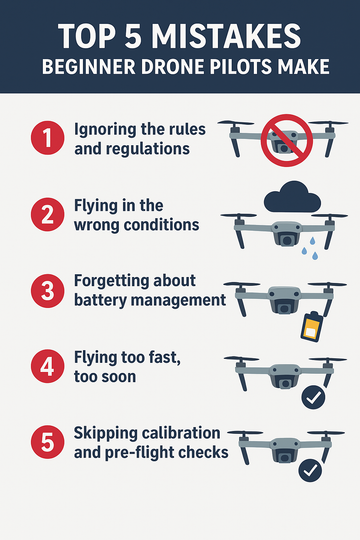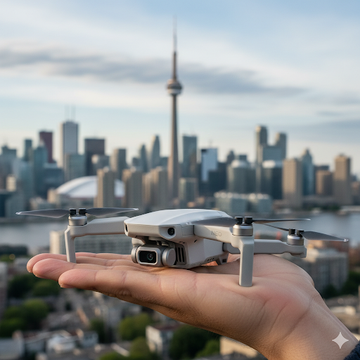Top 5 Mistakes Beginner Drone Pilots Make (and How to Avoid Them)
Flying a drone for the first time is exciting — but it can also be intimidating. Whether you’ve just unboxed your DJI Mini 4 Pro or you’re testing out a new Air 3S, mistakes happen. The good news? Most beginner errors are easy to avoid once you know what to look for. Let’s break down the top 5 mistakes beginner drone pilots make and how you can prevent them.
1. Ignoring the Rules and Regulations
The Mistake: Flying without understanding local laws. Many new pilots assume drones can be flown anywhere, but that’s not the case.
How to Avoid It:
-
In Canada, always check Transport Canada’s drone rules.
-
Avoid airports, national parks, and crowded areas.
-
If your drone is over 250g, you may need certification.
2. Flying in the Wrong Conditions
The Mistake: Taking off in strong winds, rain, or low visibility. Weather can ruin a flight — and your drone.
How to Avoid It:
-
Check the forecast before flying.
-
Avoid winds above 25–30 km/h, especially with smaller drones like the Mini 4 Pro.
-
Cold weather? Keep batteries warm and shorten flight times.
3. Forgetting About Battery Management
The Mistake: Running your battery too low or forgetting to charge spares. Nothing kills a flight faster than dead batteries.
How to Avoid It:
-
Land when your drone hits 20–25% battery.
-
Carry at least 2–3 spare batteries for longer sessions.
-
Store batteries properly — not fully charged or fully drained.
4. Flying Too Fast, Too Soon
The Mistake: Overconfidence. Many beginners push their drone to full speed, fly too high, or take risky shots before learning control.
How to Avoid It:
-
Start in Beginner Mode to limit altitude and distance.
-
Practice smooth joystick movements for cinematic footage.
-
Focus on stability, not speed.
5. Skipping Calibration and Pre-Flight Checks
The Mistake: Taking off without checking settings, compass calibration, or GPS. This can lead to unstable flights or crashes.
How to Avoid It:
-
Calibrate your compass and IMU when prompted.
-
Confirm GPS signal lock before flying.
-
Double-check propellers, SD card, and gimbal before takeoff.
Final Thoughts
Every pro pilot once made these mistakes — but you don’t have to. By starting small, flying smart, and building confidence, you’ll quickly move from amateur to skilled drone pilot.
👉 Ready to fly with confidence? Check out beginner-friendly DJI drones like the Mini 4 Pro or Air 3S at SpeedyDrone.ca — Canada’s trusted DJI retailer.
#BeginnerDroneTips
#DronePilotMistakes
#DJIMini4Pro
#DJIAir3S
#DroneFlyingTips
#DroneCanada
#LearnToFlyDrone
#DroneRulesCanada
#AmateurDronePilots
#SpeedyDrone







